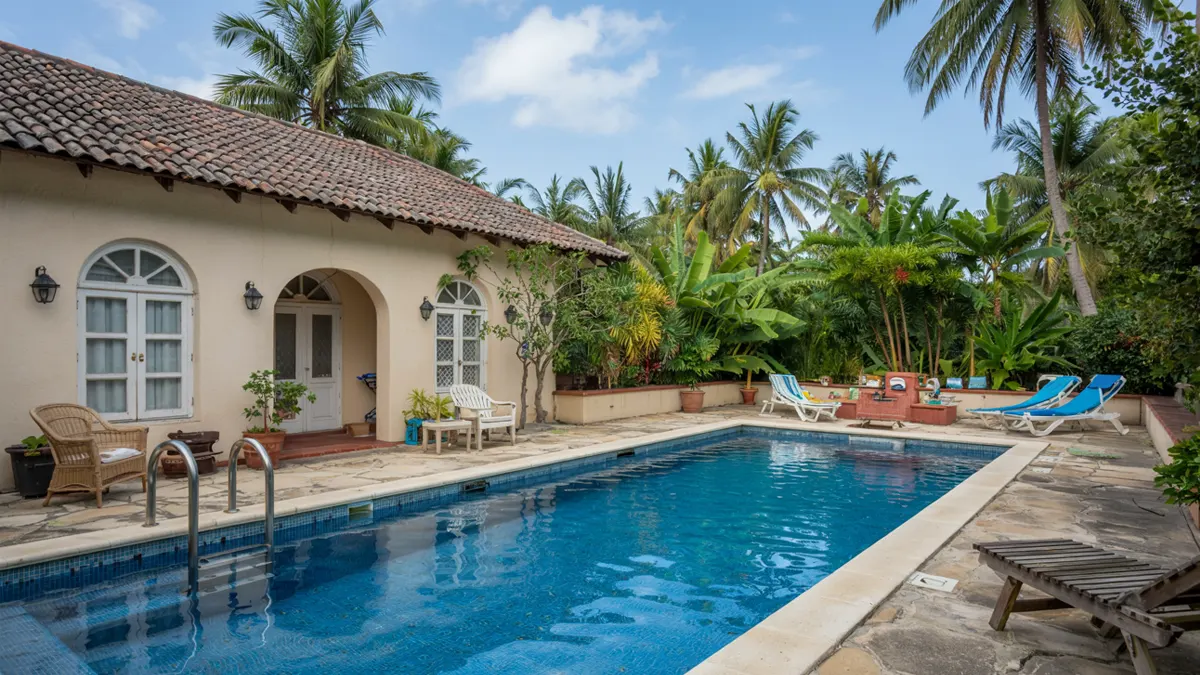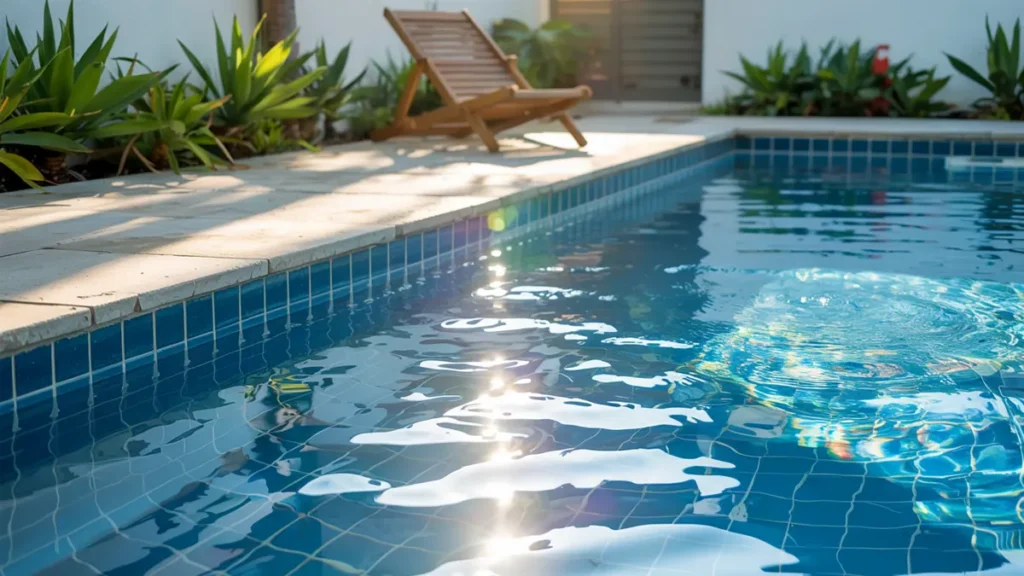
Dreaming of transforming your backyard into a personal oasis with a sparkling swimming pool? Before you dive into this exciting project, it’s crucial to consider the placement of your pool in relation to your home. Determining the optimal distance between your house and the pool isn’t just about aesthetics; it involves safety, legal regulations, and practical usability.
In this guide, we’ll explore the factors that influence pool placement and how to strike the perfect balance between convenience and compliance.
First, Understand Local Regulations!
Building Codes and Setback Requirements
The first step in planning your pool’s location is to familiarize yourself with local building codes and zoning laws. These regulations often specify “setback” requirements—the minimum distance your pool must be from property lines, your house, and other structures.
Setback distances can vary significantly depending on your municipality, ranging anywhere from 5 to 25 feet. For instance, some areas may require a minimum of 10 feet between the pool and your home to ensure safety and structural integrity.
Factors Influencing Pool Placement
Property Size and Layout
Your property’s dimensions play a pivotal role in determining pool placement. In smaller yards, placing a pool too close to the house might limit space for other outdoor activities or amenities like patios and gardens.
Conversely, larger properties offer more flexibility but still require careful planning to maintain a harmonious balance between the pool, the house, and the surrounding landscape.
Soil and Ground Conditions
The stability of the ground where you plan to install your pool is another critical consideration. Soil types such as sandy, rocky, or expansive clay can affect the construction process and the pool’s longevity.
Unstable soil may necessitate additional engineering solutions to prevent shifting or settling, which could compromise both the pool and your home’s foundation.
Sunlight Exposure

Maximizing sun exposure can enhance your swimming experience by naturally warming the pool water and reducing heating costs.
Observe the sun’s path over your property to identify the sunniest spots, keeping in mind that placing the pool too close to the house or large trees might result in unwanted shading.
Proximity to Utilities
Before finalizing your pool’s location, identify the placement of underground utilities like water, gas, and electrical lines. Building too close to these utilities can pose safety risks and may require costly rerouting.
Privacy and Noise Considerations
A pool situated near your home can offer convenience but may also lead to increased noise levels inside the house. Additionally, consider how the pool’s location affects privacy—from both your perspective and that of your neighbors.
Strategic placement, along with landscaping features like fences or hedges, can mitigate these concerns.
Pros and Cons of Having a Pool Close to the House
Advantages
- Convenience: Easy access to the pool from your home can enhance your swimming experience and encourage frequent use.
- Supervision: For families with children, a pool closer to the house allows for better monitoring from inside.
- Aesthetics: A well-integrated pool can enhance the visual appeal of your home and create a seamless indoor-outdoor living space.
Disadvantages
- Maintenance Challenges: Pools near the house may increase humidity levels indoors and require diligent maintenance to prevent issues like mold or mildew.
- Safety Risks: Closer proximity means a higher risk of water damage to your home’s foundation and potential safety hazards, especially if proper barriers aren’t in place.
- Limited Space: A pool too close to the house might restrict space for other outdoor features and reduce overall backyard functionality.
Best Practices for Pool Placement
Consult Professionals:
Engage with experienced pool designers and contractors who can assess your property and provide tailored recommendations.
Obtain Necessary Permits:
Ensure all required permits are secured before commencing construction to avoid legal complications.
Plan for Decking and Landscaping:
Allocate sufficient space around the pool for decking, seating, and landscaping to enhance usability and aesthetics.
Implement Safety Measures:
Install appropriate barriers, such as fences and pool covers, to ensure safety—especially for households with young children or pets.
Your Takeaway
Determining how close a swimming pool can be to your house involves a careful evaluation of local regulations, property characteristics, and personal preferences. By considering factors like safety, convenience, and aesthetics, you can create a backyard retreat that complements your home and lifestyle.
Navigating these considerations can be complex, but you don’t have to do it alone. Pools R US specializes in designing and installing custom pools tailored to your property’s unique features and your personal vision. Their experienced team will guide you through every step, ensuring compliance with all regulations and delivering a pool that enhances your home’s beauty and functionality.